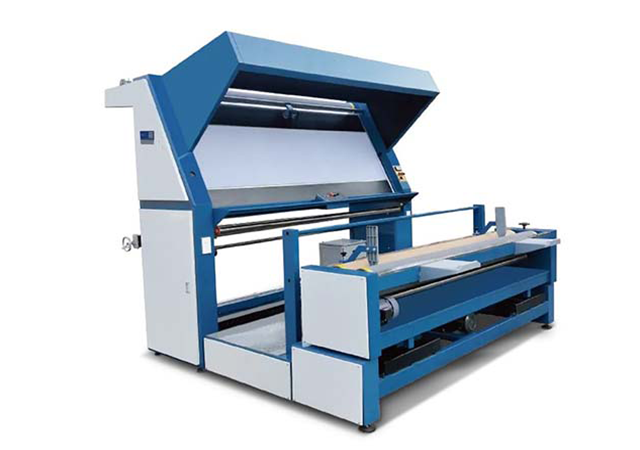Modern garment production relies heavily on technology to ensure consistent quality and efficiency. One such essential tool is the fabric inspection machine, which plays a crucial role in identifying and eliminating defects from textiles before they enter the manufacturing process. This article delves into the workings, benefits, and applications of fabric inspection machines, highlighting their transformative impact on the garment industry.
- Function and Importance:
Fabric inspection machines meticulously examine fabrics for flaws, irregularities, and color inconsistencies. They employ high-resolution cameras to capture detailed images, allowing operators to scrutinize the fabric for any defects. This process ensures that only the highest-quality materials are used in garment production, contributing to the creation of superior products.
- Types of Machines:
Two primary types of fabric inspection machines exist:
Visual Inspection Machines: These machines rely on human operators to visually examine the fabric through magnification and lighting. They are cost-effective and widely used in the garment industry.
Visual Inspection Machine
Automatic Inspection Machines: These machines employ advanced sensors and computer systems to automatically identify defects. They offer increased speed and accuracy, making them ideal for large-scale production.
Automatic Inspection Machine
Benefits of Utilizing Fabric Inspection Machines
Ensured Fabric Excellence: Fabric inspection machines guarantee the superior quality of textiles by meticulously identifying and eliminating flaws, laying the foundation for exceptional garments.
Verified Color Fastness: These machines assess color fastness, ensuring garments retain their vibrancy and prevent fading or bleeding after washing.

Flaw Detection: They effectively detect various defects like holes and tears, preventing the production of garments prone to premature deterioration.
Time and Cost Efficiency: Fabric inspection machines significantly reduce the need for manual inspection, saving time and resources. This enables businesses to allocate resources more efficiently and improve production speed.
Improved Supply Chain Management: Fabric inspection machines provide real-time data on fabric quality, enabling manufacturers to make informed decisions regarding supplier selection and inventory management.
Reduced Environmental Impact: By minimizing the production of defective garments, fabric inspection machines contribute to a more sustainable manufacturing process by reducing waste and energy consumption.
- Applications in the Garment Industry:
Fabric inspection machines are invaluable tools for
Upholding Material Standards: They ensure that fabrics meet quality standards, preventing the production of garments with structural issues or visual defects. This enhances customer satisfaction and reduces product returns.
Informed Material Selection: By identifying defects, these machines help businesses make informed decisions regarding material selection, ensuring the use of only high-quality fabrics.
Optimizing Production Processes: Streamlined fabric inspection facilitates efficient production processes, leading to increased production capacity and lower costs.
Ensuring Regulatory Compliance: Fabric inspection machines help manufacturers comply with industry regulations and quality standards.
Enhancing Brand Reputation: By producing high-quality garments, businesses can enhance their brand reputation and build customer loyalty.
Fabric inspection machine have revolutionized the garment industry by introducing a level of precision and control previously unattainable. Their ability to swiftly and accurately detect defects saves time and resources, while also guaranteeing the quality of finished products. This translates to increased profitability, customer satisfaction, and a more sustainable production process. As technology continues to evolve, fabric inspection machines will undoubtedly remain indispensable tools in the garment industry, driving further advancements and enhancing the quality of garments for years to come.




